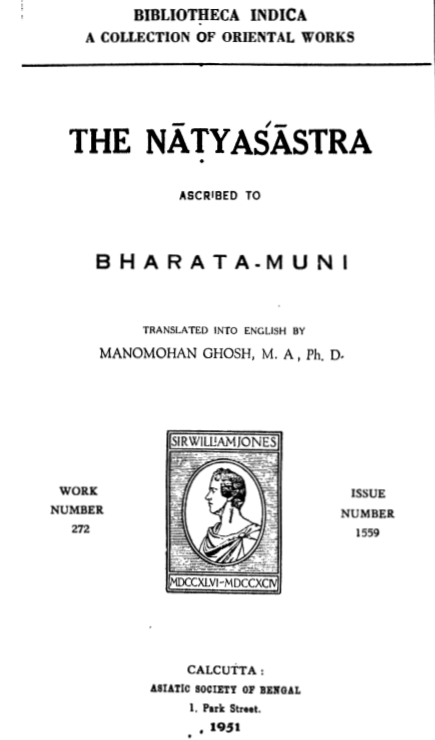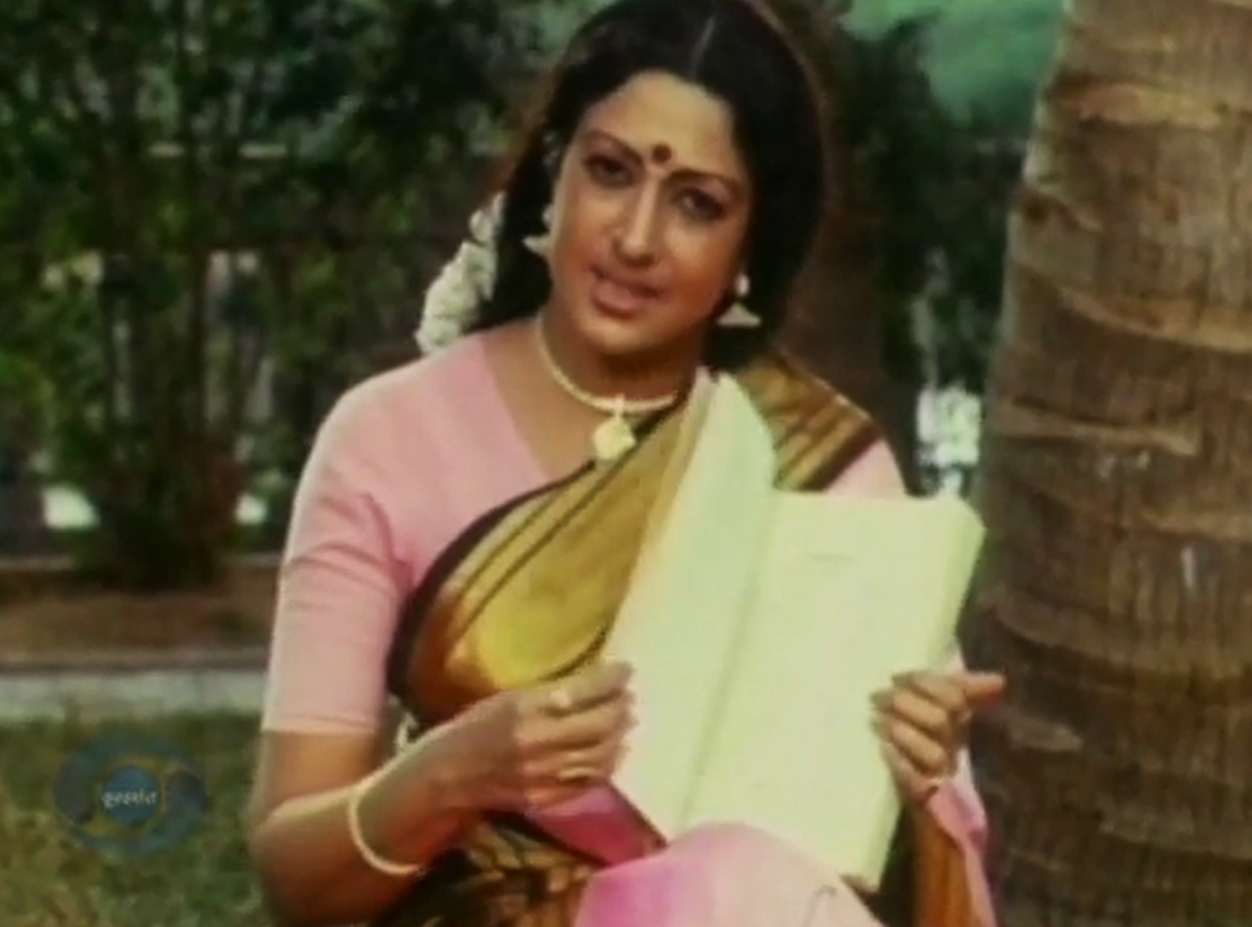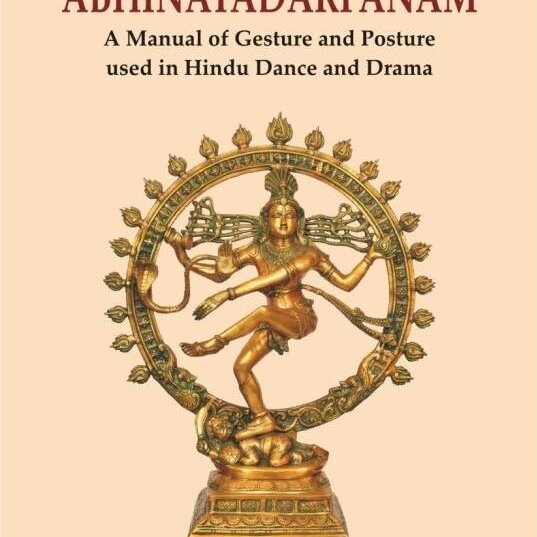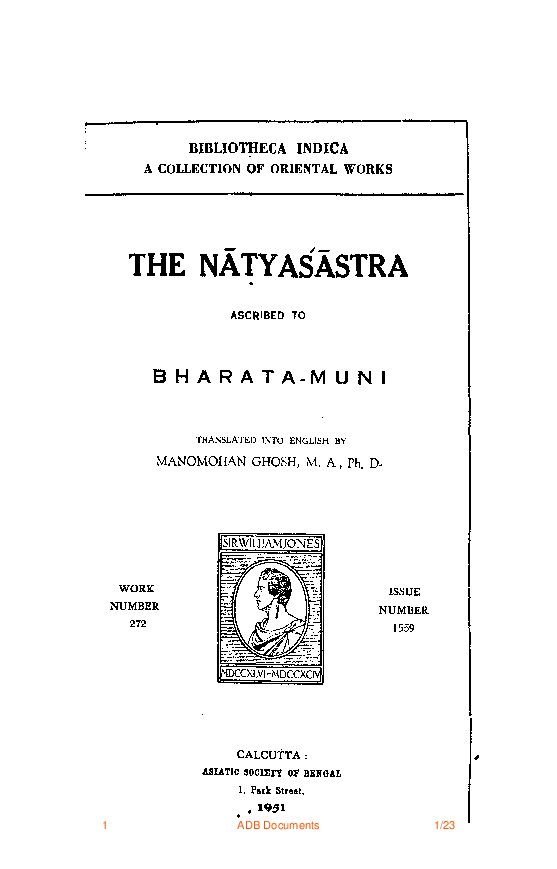The Natyashastra, English Translation
by Manomohan Ghosh
The first integral English translation of the Sanskrit Treatise on Hindu Dance, "Dramaturgy and Histrionics".

Type: e-book
Publisher: The Royal Asiatic Society of Bengal, Calcutta | Bibliotheca Indica 272 | 2 vols.
Edition: First digitized complete edition with the 2 volumes | ADB Documents, 2022
Published: 1951
Author: Manomohan Ghosh
Pages: 947
Languages : English, Sanskrit
ADB Library Catalog ID: eNATYAGOSH
pdf 29.1 MB
Ascribed to sage Bharata Muni, Nāṭya Shāstra (Sk नाट्य शास्त्र, Nāṭyaśāstra, lit. “Treatise on Acting, Representing”) is a Sanskrit treatise on the performing arts, composed of 36 chapters and some 5,600 verses. Its first compilation is dated to between 200 BCE and 200 CE, although the dates of between 500 BCE and 500 CE have also been considered.
Some Indian scholars such as famous dancer and researcher Padma Subrahmanyam (in her book “Natyasastra and Unity”) have supposed that both Bharata’s treatise on dance and dramaturgy and Valmiki’s Ramayana have crossed the ocean at the same period, bringing Hindu influences to Southeast Asian cultures, and were adapted and developed into local art forms, such as, respectively, the Khmer sacred dance and the Reamker in Cambodia.
One of the main purposes of the Natyashastra (also transcribed Natyasastra) is to find the means of attaining the rasa (Sk रस. lit. “juice, essence or taste”), a concept rather similar to the “duende” in the flamenco tradition), a spiritual and physical state of wonder and bliss that transports the spectator (and performer) to another, blissful realm. Indian filmmaker Satyajit Ray (2 May 1921 – 23 April 1992) has superbly explored this process — and the inherent risk of disconnecting oneself from the real world — in his movie The Music Room (1958).
In addition to numerous notations on the techniques of performing arts, the treatise also deals with ethical and character profiling, such as: “58. The middling man: A man who takes in every way the [emotional] state of a woman with calmness and is disgusted with her on discovering any fault of her, he is to be known as ”middling”. 59. A man who makes a gift in proper time, does not have much anger even when he is insulted, but on discovering her act of deceit gets disgusted with a woman, he is to be known as “middling”. 60 – 61. The inferior man: A man who shamelessly approaches a woman with a steadfast love even when she has insulted him and loves her more strongly in spite of a friend’s advice to the contrary even when he has come to know directly of her deceit, is to be known
as “inferior”.” [p 490]
ADB Input: How influential was the Treatise to the development of Cambodian dance and music? Written sources are scarce, if any exist since Cambodian transmission of art forms have always been mostly oral. We encourage researchers, performers and historians.

Other translations
MM Ghosh’s translation has been criticized for its ‘clumsiness’, yet it is still a reference for researchers. Many other attempts to integrally translate the Treatise into English have come from various parts and cultures of India. For instance, the Kannada writer, actor and scholar Adya Rangacharya (1904−1984), known as Sriranga, offered his own version shortly before his death. A prolific author, Rangacharya wrote twelve novels and 71 original plays, acting in 47 of them. The monumental (1,643 pages) translation by Dr. N.P. Unni – an eminent sanskritist, the first scholar awarded a Ph.D in Sanskrit by the University of Kerala — offers Sanskrit transliterations and some of the comments on the original text made by Abhinavagupta.
Read dance historian Sunil Kothari’s essay “A dance historian’s notes on how the Natyashastra was mastered” (The Asian Age, May 2019)
Tags: dance, Indian influences, Hinduism, Indian aesthetics, music, women, performing arts, Natyasastra, Nathyashastra, primary sources
About the Translator

Manomohan Ghosh
Manomohan (or Manmohan) Ghosh is an Indian sanskritist, historian and literary translator who published the first complete English translation of the ancient Treatise on Performing Arts, the Natyashastra.
He is the author of numerous history books and translations, including Nandikeshwar’s Abhinayadarpanam : A manual of gesture and posture used in Hindu dance and drama (Calcutta, 2d ed., 1957), Glimpses of sexual life in Nanda-Maurya India : translation of the Caturbhāṇī together with a critical edition of the text (Calcutta, 1975), A history of Cambodia from the earliest times to the end of the French Protectorate (J.K. Gupta, Saigon, 1960 — Calcutta, 1968), Contributions to the history of the Hindu drama : its origin, development and diffusion (Calcutta, 1958).
His article On the source of the Old-Javanese Ramayana kakawin is often quoted by scholars and researchers.

